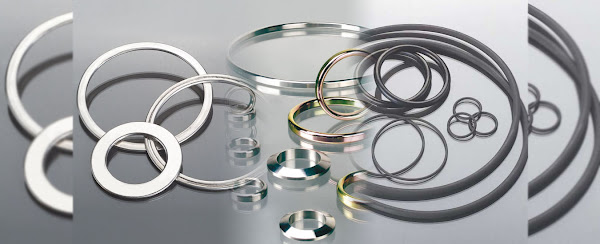Environmental Impact of Gaskets: Sustainability in the Sealing Industry - Gasco- Inc
Gasco Inc, a renowned Indian company, is a leader in its field and highly regarded for its exceptional Gasket Manufacturers in India. Their unwavering dedication to producing superior products is evident in their meticulous approach and unparalleled precision during the manufacturing process.
As reliable Gasket Suppliers in India, we take great pride in our commitment to maintaining the highest standards, ensuring absolute precision in every aspect of our work. Our exceptional accuracy sets us apart from competitors, solidifying our position as a reputable Gasket Manufacturer in Mumbai and Gasket Manufacturer in Pune.
These core values underpin our achievements, guiding us to adhere to regulations and consistently demonstrate our commitment to excellence. Recognized as a respected creator of Seal Ring Manufacturers in India, our seal rings are widely used across various sectors, including plumbing, hydraulics, and aerospace. Moreover, we excel as a leading Gasket Manufacturer, offering a diverse range of products such as ring joint gaskets, metal jacketed gaskets, flexible graphite gaskets, and ceramic gaskets.
Gasket Materials and Their Environmental Impact - Gasco- Inc
Elastomers (Rubber-based Gaskets): Rubberlike materials like nitrile, neoprene, and EPDM are common sealing components used in car and industrial products. These materials are made through chemical processes that involve extracting and refining crude oil.
Silicone Gaskets: Based on this, silicone-based gaskets have high resistance to temperature and chemicals. However, while silicone can be produced from silica, which is more readily available in nature as well as compared to oil, the manufacturing process still requires much energy and produces carbon.
Metallic Gaskets: Metals used to manufacture gaskets include steel, aluminum, copper, or alloys. Most of these are recyclable, meaning metallic gaskets are more environmentally friendly than rubber ones. Moreover, extraction, refining, and fabrication of metals require high energy inputs, and, aside from being an environmental concern, mineral. mining also impacts the environment in addition to the emissions that go along with the process.
Graphite Gaskets: Graphite, with its high temperature and chemical resistance, is very common in the industrial environment. But this is actuallya moree environmentally friendly material compared to its synthetic counterpart. Though there are some drawbacks, graphite refining processes consume much energy with most graphite mining apparently degrading the environment through improper mining methods.
Cork Gaskets: A cork gasket is one of the most environmentally friendly options. It is a renewable resource that is harvested from the bark of Cork oak trees grown mainly in the Mediterranean region. Harvesting of cork does not damage the tree, letting it renew and continue to sequester carbon.
Top Gasket Manufacturer Leading with Variety Of Shapes Sizes in India
Sustainability Challenges in the Gasket Industry
Resource Extraction and Material Sourcing : One of the primary sustainability challenges for the industry is the extraction of raw materials. Most gasket materials, including metals and synthetic rubbers, are characterized by resource-intensive processes involving mining, refining, and chemical treatments that result in habitat loss, water pollution, and carbon emissions. The dependence of the industry on nonrenewable resources, including crude oil for synthetic elastomers and metals, reveals the imperative of using more renewable or sustainable materials.
Manufacturing and Production Emissions : Another sector with heavy environmental impacts is gasket manufacturing. Most plants that manufacture gaskets require a lot of energy, especially in the way of dealing with the more high-temperature materials such as silicone or metals, and fossil-fueled energy is used most. Chemical use in the manufacturing process for negative products such as volatile organic compounds is also an aspect contributing to air pollution and being hazardous to workers' health.
Waste Generation and End-of-Life Disposal : Gaskets wear out and have to be changed. Waste from the replacement of a used gasket is typically thrown in the landfill. It might be recyclable if its metal, but many rubber-based ones cannot be recycled and contribute to the ever-growing list of waste in landfills. Non-biodegradable materials stay in the environment for hundreds of years, adding to plastic and chemical waste pollution. When the gaskets cannot be recycled, incineration leads to the emission of harmful gases and subsequently pollution.
We now offer shipping services to the countries mentioned beneath:
Sustainable Solutions in the Sealing Industry
Biodegradable and Renewable Materials: Biodegradable gasket materials provide a hopeful answer to the issue of disposal. Plant-derived materials and bio-elastomers are becoming more popular as replacements for conventional synthetic rubbers.
Recycling and Circular Economy Initiatives: Numerous companies are embracing circular economy approaches, highlighting the significance of recycling and repurposing gasket components. For example, metals can be melted and reused, minimizing the necessity for extracting raw materials.
Energy-Efficient Manufacturing: Improvements in manufacturing technology are helping to decrease the energy used in making gaskets. Factories are using energy-saving equipment, renewable energy sources, and cleaner production methods to reduce emissions.
Regulatory Compliance and Eco-certifications: Regulations and environmental certifications are compelling companies to embrace more sustainable methods. Standards like ISO 14001 offer guidance on minimizing the environmental footprint of production processes.
To learn more, visit our website: gascogaskets.com
.png)

.png)

Comments
Post a Comment